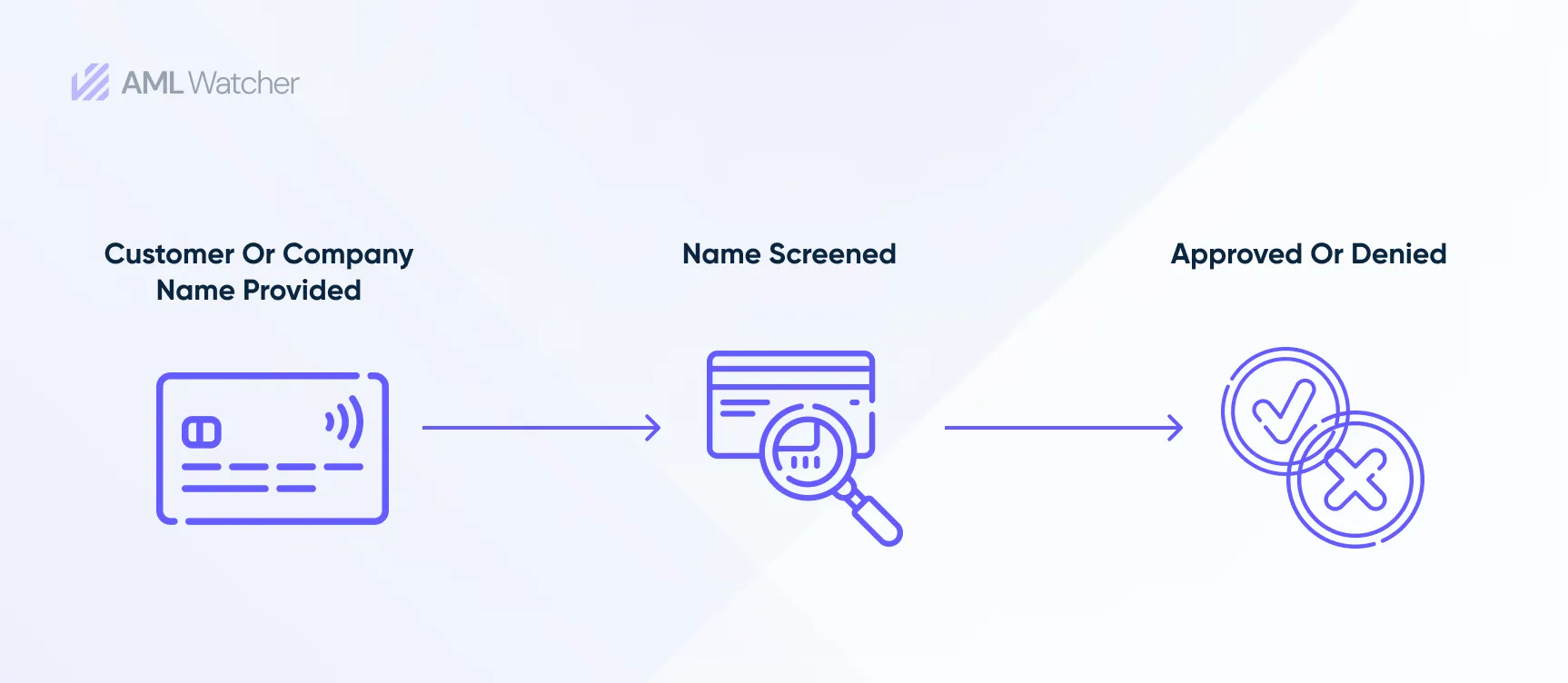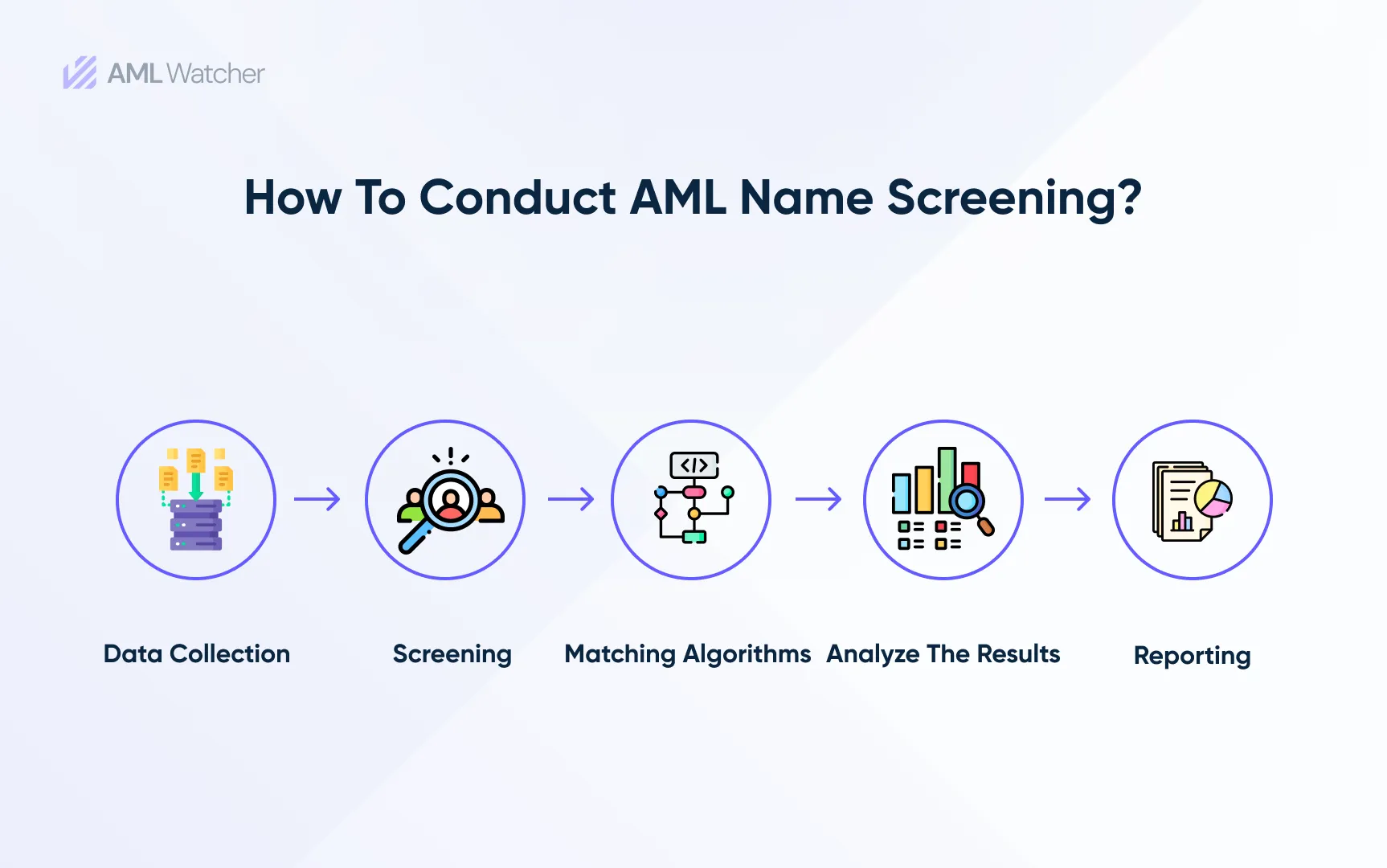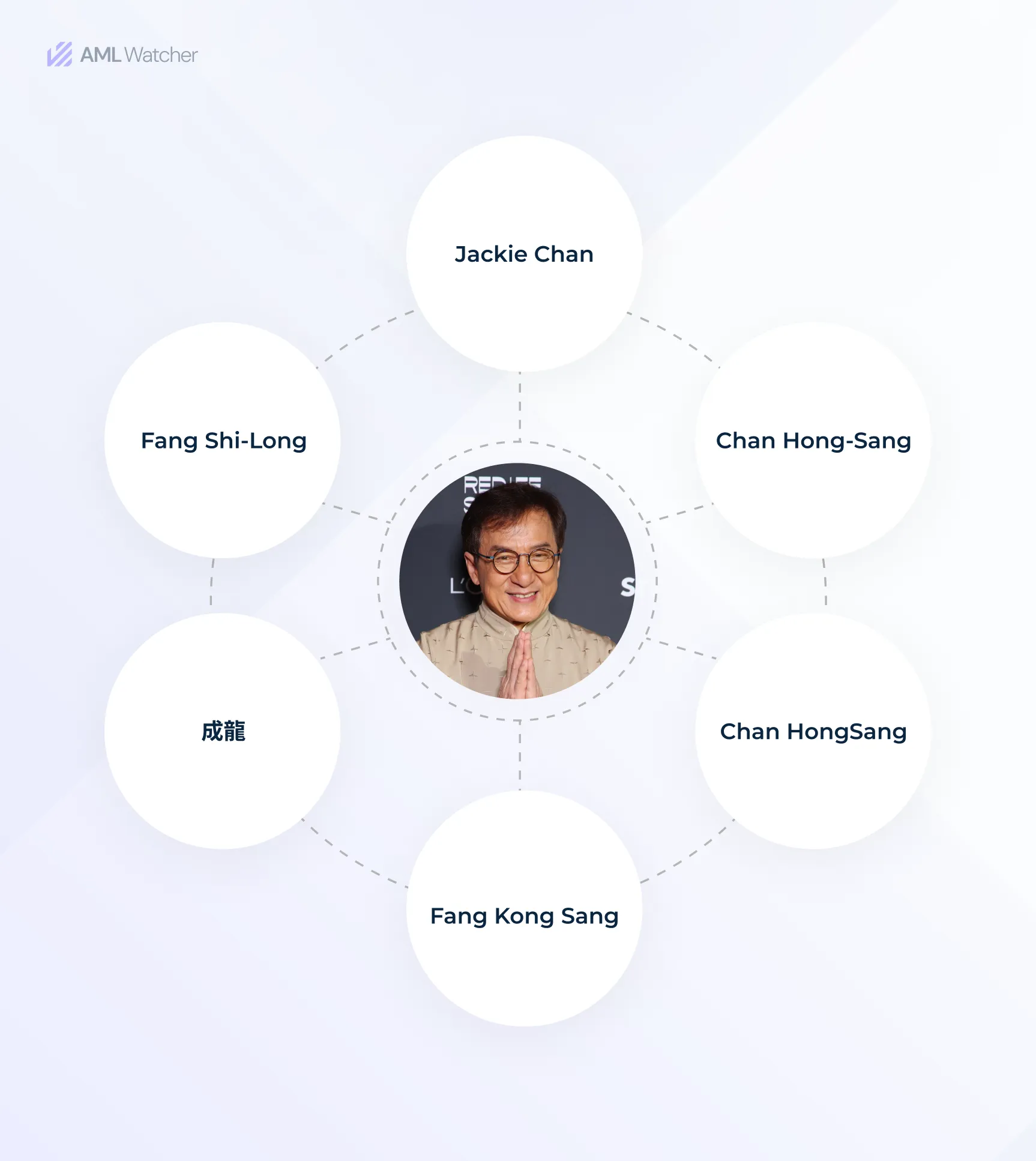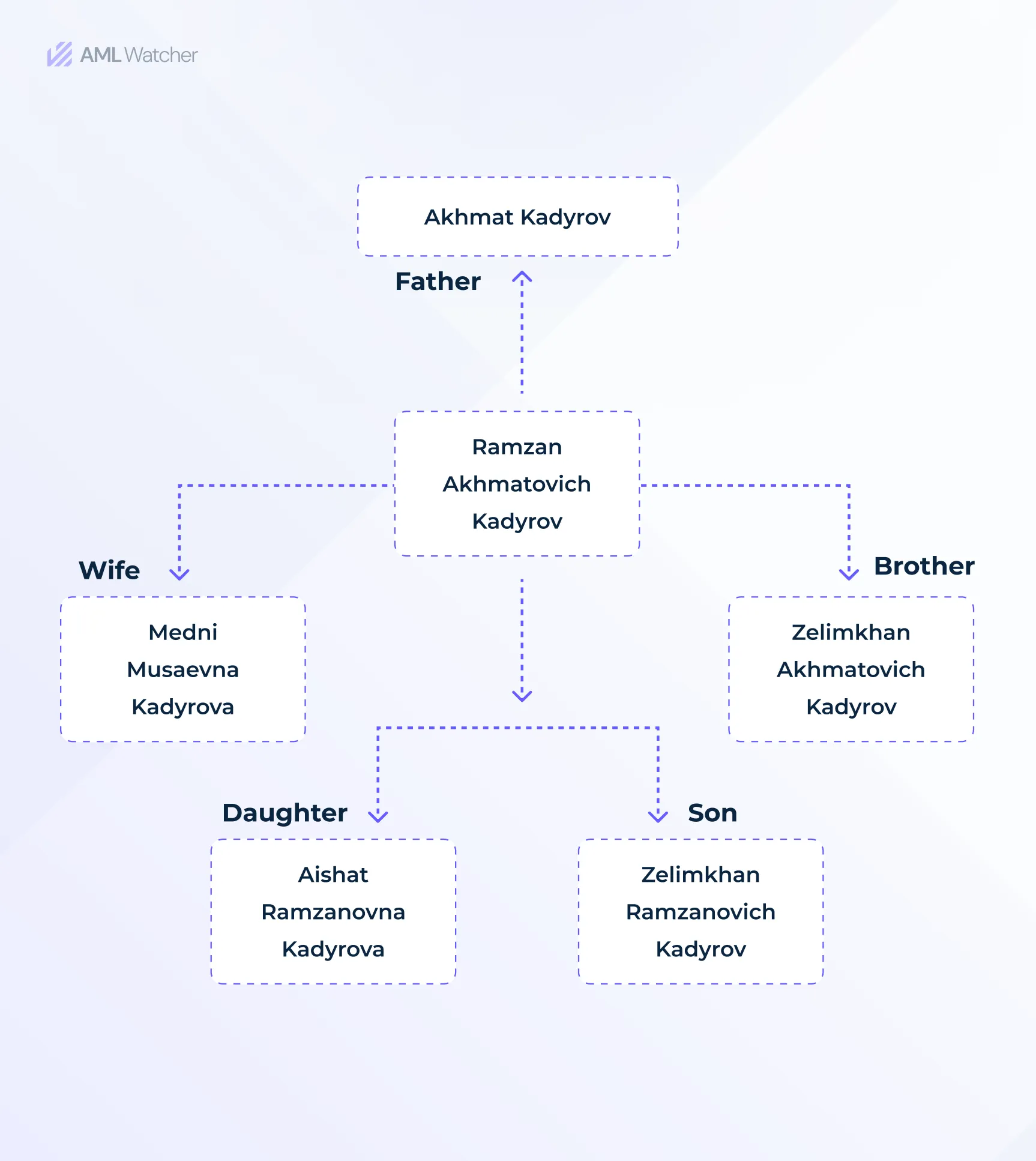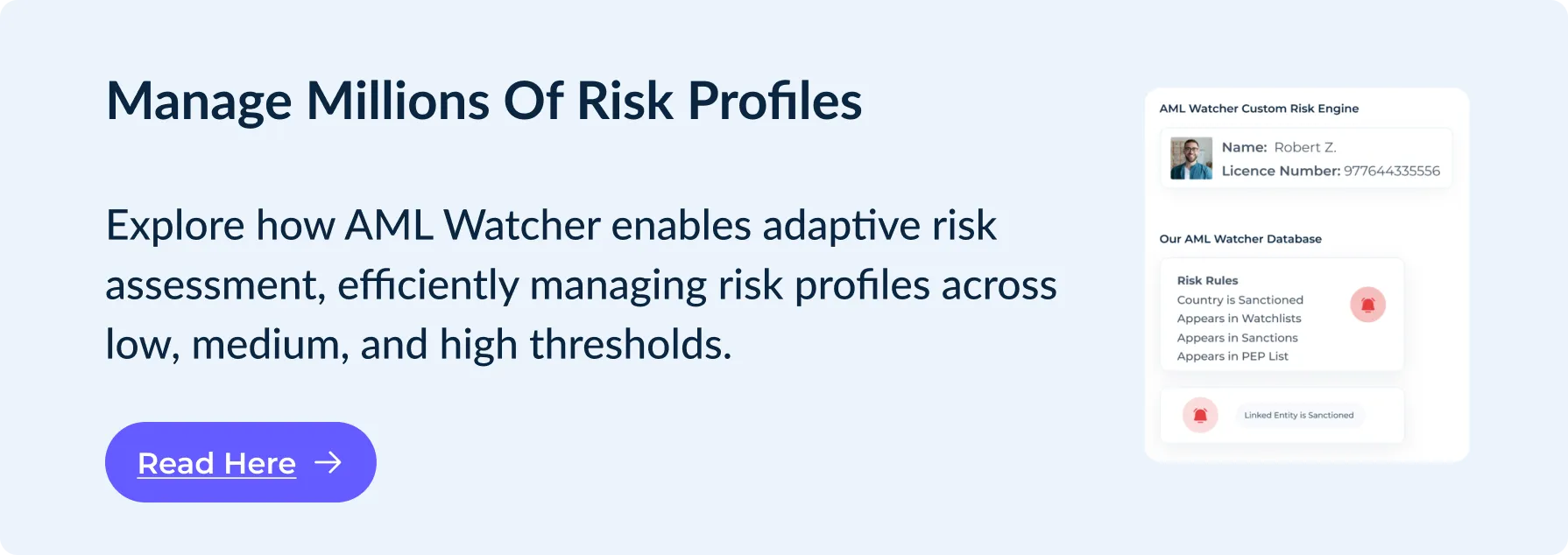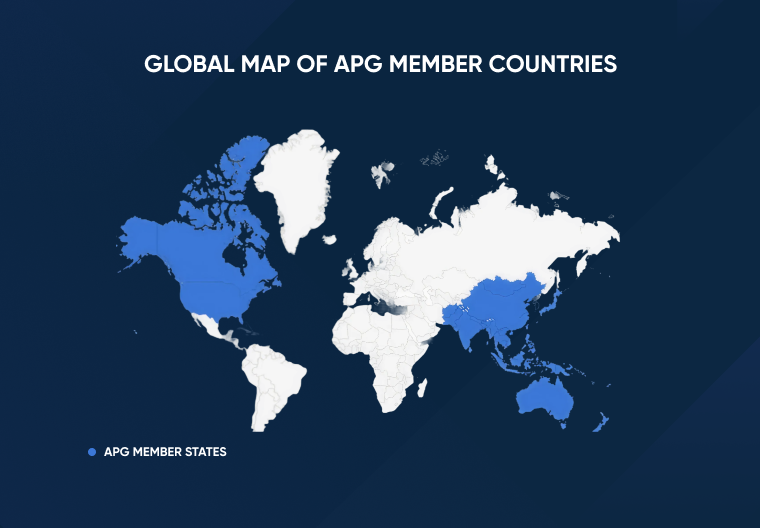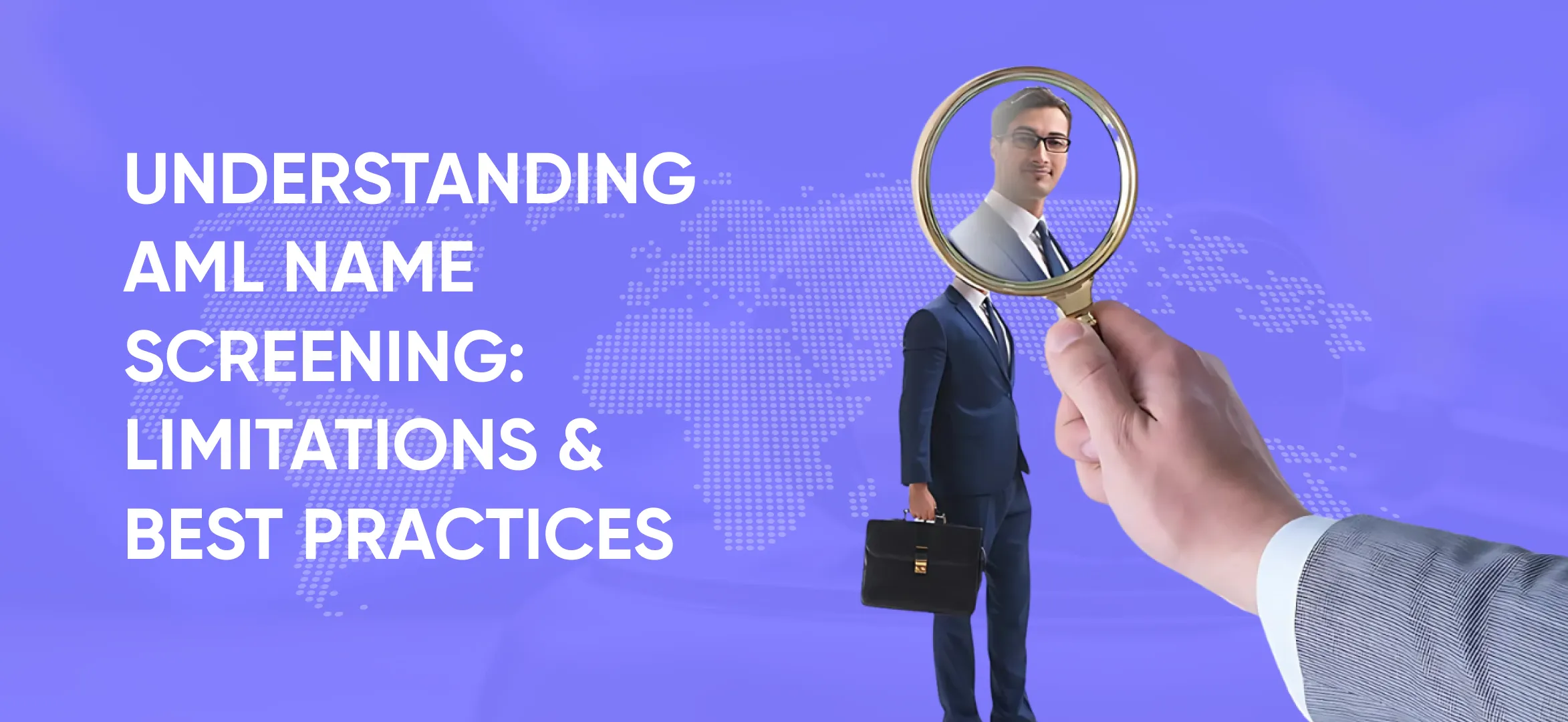
Understanding AML Name Screening: Limitations & Best Practices
“Technological innovations will be the heart and blood of the banking industry for many years to come.”
John Stumpf, former CEO of Wells Fargo.
With the FinTech industry’s rapid expansion, reducing financial risks and ensuring safe onboarding while performing due diligence are two of the primary challenges faced by the finance-based sectors.
Envision a scenario where a high-risk individual attempts to open an account at your bank. This person might not have a criminal record, but his name appears on a sanctions list.
Without a proper AML screening system, this individual could easily bypass the detection and become a threat for money laundering.
How can institutions detect and block these high-risk clients?
Implementing name-screening solutions can help to detect these high-risk individuals and prevent them from utilizing your institution as an ideal platform to carry out illegal financial transactions.
The market size of financial services has experienced rapid expansion in recent years, surging from $31138.82 billion in 2023 to $33539.52 billion in 2024, reflecting a CAGR of 7.7%. This upward trend is anticipated to persist at $44925.71 billion by 2028, exhibiting consistent growth of 7.6% annually.
Such numbers highlight the importance of implementing name screening to protect the integrity of banks. Additionally, it will help the banking sectors comply with anti-money laundering (AML )and counter-financing terrorism (CFT) regulations.
You may be surprised to discover how this feature screens customers and reduces financial misconduct. How can financial institutions overcome the limitations and stay compliant with global AML regulations by implementing efficient name-screening solutions?
Here we go;
What is Name Screening?
Name Screening is the process in which individuals’ names are cross-checked in diverse local and international databases, specifically those related to criminal records, blacklists, and public records.
What is AML Name Screening?
AML name screening involves screening individuals who may be at risk of involvement in money laundering by checking their names against various databases, such as ‘sanctions lists, politically exposed persons (PEP) lists, international leaks, high-risk business lists, adverse media, watchlists, and criminal records.’ All these evaluations check the associated risk level with the potential clients and their history for any links to criminal activity.
What is the Purpose of AML Name Screening?
Name screening in Anti Money Laundering (AML) checks serves the following purposes:
- Establish a unique risk profile based on an individual’s risk status. The screening processes allow the banking sectors to detect any criminal history or suspicious background by detecting names sanctioned in various databases.
- Create ongoing monitoring and customer due diligence, to ensure that an individual with several risk factors is not linked with money laundering, fraud, and other financial crimes. This may necessitate enhanced due diligence for any potential suspicious activity.
- Meet legal obligations under AML regulations by “FATF, US Patriot Act, and EU directives. etc.”
- Detects and applies enhanced monitoring for PEPs due to higher risks of bribery or corruption.
- Check against global sanctions lists by OFAC, EU, UN, and more to avoid legal repercussions.
- File Suspicious Activity Reports (SARs) for individuals and entities involved in doubtful activities.
- Guarantee compliance with cross-border AML requirements, facilitating smoother international banking operations.
However, everything in this world has challenges, and it’s essential to discuss what challenges institutions face in implementing name-screening solutions.
What are the Challenges of Name Screening?
The challenges of name-based screening in AML compliance arise from issues such as;
- People use different spellings of their names due to personal preferences and cultural variations that cause false negatives and false positives.
- People often use nicknames or aliases that make detection difficult.
- Names written in non-Latin alphabets can be challenging to transliterate accurately.
- Watchlists and databases may contain errors or omissions, leading to false positives or negatives.
- Innocent individuals may be flagged due to name similarities or errors in data.
- Individuals with criminal connections may not be highlighted due to incomplete data or inadequate screening methods.
5 Steps Involved in AML Name Screening
To perform AML name screening, it is essential to go through a series of steps, which include:
Data Gathering
The first step begins with having a credible and reliable database in place because not every solution provider offers exact results. Now, it shouldn’t be restricted to just checking boxes or having certain names in databases to be checked. It must incorporate ‘global sanctions lists, PEP databases, and adverse media reports that reduce the risk of overlooking high-risk individuals.
Data Preparing
The second step is to ensure the data is cleaned, standardized, and structured to eliminate duplicates to show the accuracy of the screening process by reducing the number of false positives and false negatives.
Name Screening
The third step begins with the comparison of gathered data against the ‘databases incorporating updated sanction lists, watchlists, or PEP data. It involves the implementation of the right percentage of fuzzy matching strategies and advanced algorithms to get accurate matches.’
Risk Evaluation
The fourth step is to evaluate similar matches to evaluate what level of risk is associated with each potential hit. This step involves analyzing the context of each match, including associated behaviors, jurisdictions, or involvement in high-risk activities.
Decision Making
After that, the right decisions are taken according to the risk assessment results, which can be:
- Rejecting the client.
- Placing a hold on their account.
- Reporting them to relevant authorities.
- Conducting enhanced due diligence (EDD)
Name screening plays an essential role in the world of AML screening by assisting the banking sectors in screening the possible risks and ensuring adherence to set standards.
Remember that a person’s financial risk profile can fluctuate due to changes in their personal and financial circumstances, necessitating continuous monitoring and adaptive risk management systems to mitigate these emerging risks.
Now, after reading about name-screening solutions, you know the importance of this feature and how people can secure their business relationships with high-risk individuals and sanctioned entities by using this solution.
Use Cases of Name Screening in Different Regions
With AML Watcher, risk analysts and compliance officers can easily manage linguistic and cultural nuances. Here are examples of linguistic and cultural challenges in Chinese and Russian languages.
Chinese Naming Conventions
If we look at the challenges that people face when searching for sanctioned names in databases in Chinese naming conventions, here are the name variations that you can encounter.
- Chinese naming conventions arrange names as follows:
(Family Name) (Given Name)
- ZHANG Chen (Male)
- WANG Xiu (Female)
The family name is Patrilineal, and it is shared with other family members. It always comes before the given name.
- Name in Chinese characters (邓小平) can be written together, divided into two, or hyphenated.
For instance, Xiao-ping, Xiaoping, Xiao Ping
- Chinese women don’t change their names after marriage; rather, they like to write their husbands’ names before their full names.
For instance, if Wang Xiu married Zhang Chen, she would write Zhang Wang Xiu.
- The transcription system widely used in the People’s Republic of China is called Hanyu Pinyin System.
- Spellings can also change between Cantonese and Mandarin.
For Example, Wang is written as WONG in Cantonese.
- Different representations of Chinese characters in English result in the same Chinese name being written with different spelling variations.
For Example, LIU can be spelled as LAU, LIEW, or LIOU.
- Different Representations Of Chinese Characters In English Can Result In The Same Chinese Name Being Written With Different Spelling Variations.
For Example, LIU May Also Be Spelt LIOU, LAU And LIEW.
- Spellings Can Also Vary Between Mandarin And Cantonese.
For Example, WANG Is Often Transcribed As WONG In Cantonese.
The transcription system widely used in the People’s Republic of China is called the Hanyu Pinyin System.
- It Is Common For People To Adopt A Western Personal Name To Use In International And English-Speaking Contexts.
For Example, ZHANG Chen May Be Known As “James”.
- People May Also Change The Arrangement Of Their Names To Suit English-Western Naming Conventions.
For Example, ZHANG Chen May Be Known As James ZHANG Or Chen ZHANG.
- Some People May Keep Their Original Given Name As A Middle Name, But Essentially Adopt A New Name And Format It In The Western Way:
For Example, [Western Given Name] [Chinese Given Name] [Family Name). For Example, ZHANG Chen May Be Known As James Chen ZHANG.
2. Russian Naming Conventions
What secrets are concealed within a name in Russia?
In the Russian Language:
- Middle Name Is Usually Father’s Name
- For Men, The Middle Name Ends With Suffix:
For Example: 1-Ovich (-Ович) 2-Evich (-Евич) 3-Ich (-Ич)
- For Women, The Middle Name Ends With Suffix:
For Example, 1- Ovna (-Овна) 2- Evna (-Евна) 3- Ichna (-Ична) 4- Inichna (-Инична)
- When Women Marry, They Customarily Retain Their Given Name And Middle (Patronymic) Name But Adopt The Surname Of Their Spouse (Although Not Always)
- Based On These Instructions, Can You Tell The Relationships Of The Family Of Ramzan Akhmatovich Kadyrov, The Head Of The Chechen Republic Who Was Sanctioned In 2017 Under The Magnitsky Act.
- Aishat Ramzanovna Kadyrova
- Zelimkhan Akhmatovich Kadyrov
- Zelimkhan Ramzanovich Kadyrov
- Medni Musaevna Kadyrova
Searching for an efficient solution to address these issues?
Look no further, AML Watcher has all the answers.
How does AML Watcher help Financial Institutions Minimize Name-Screening Challenges?
AML Watcher enables financial institutions to address name-screening challenges by offering a set of efficient and advanced screening features tailored to streamline the process and reduce inaccuracies.
It offers:
1. Comprehensive Database Coverage
- Screen names against extensive “global databases, including more than 100,000 sanctions lists, politically exposed persons (PEP) lists, adverse media, and watchlists, ensuring up-to-date and accurate coverage.” It minimizes the possibility of missing individuals engaged in financial misconduct or other high-risk activities.
2. Advanced Name Matching Algorithms
- Utilizes “fuzzy matching algorithms that account for spelling variations, aliases, and cultural name differences, reducing the risk of false negatives.” The system balances the search requirements by allowing customized fuzzy matching settings.
3. Real-Time Monitoring and Updates
- Offers ‘real-time name screening and monitoring, continuously updating databases’ to ensure financial institutions can respond promptly to any new risks. This ‘proactive approach helps prevent financial crimes before they occur.’
4. Multilingual and Cross-Jurisdictional Support
- Screening in 80+ languages, AML Watcher offers multilingual screening capabilities to ensure names written in different languages and scripts are accurately screened, making it perfect for organizations with international operations. Regardless of linguistic or cultural differences, it ensures accurate screening.
5. Adverse Media Screening
- Search “adverse media databases to detect persons associated with financial crime or negative publicity; provide financial institutions with a better risk picture.” This helps detect hidden risks and track reputational issues beyond standard watchlists.
7. Reducing False Positives
AML Watcher “refines search parameters and applies advanced filtration techniques” that help to significantly reduce false positives, minimizing unnecessary manual reviews and improving operational efficiency.
We are here to consult you
Switch to AML Watcher today and reduce your current AML cost by 50% - no questions asked.
- Find right product and pricing for your business
- Get your current solution provider audit & minimise your changeover risk
- Gain expert insights with quick response time to your queries
